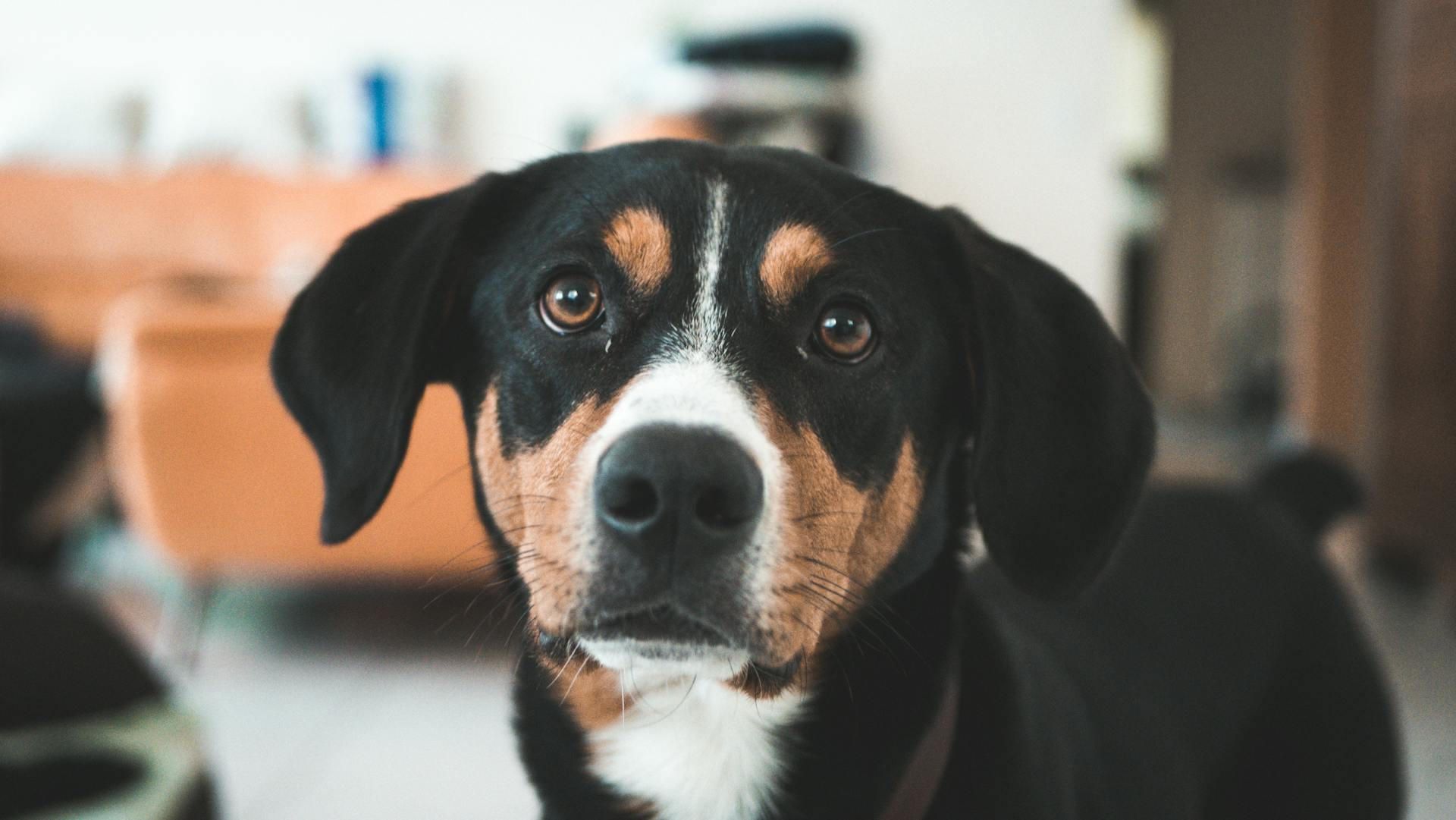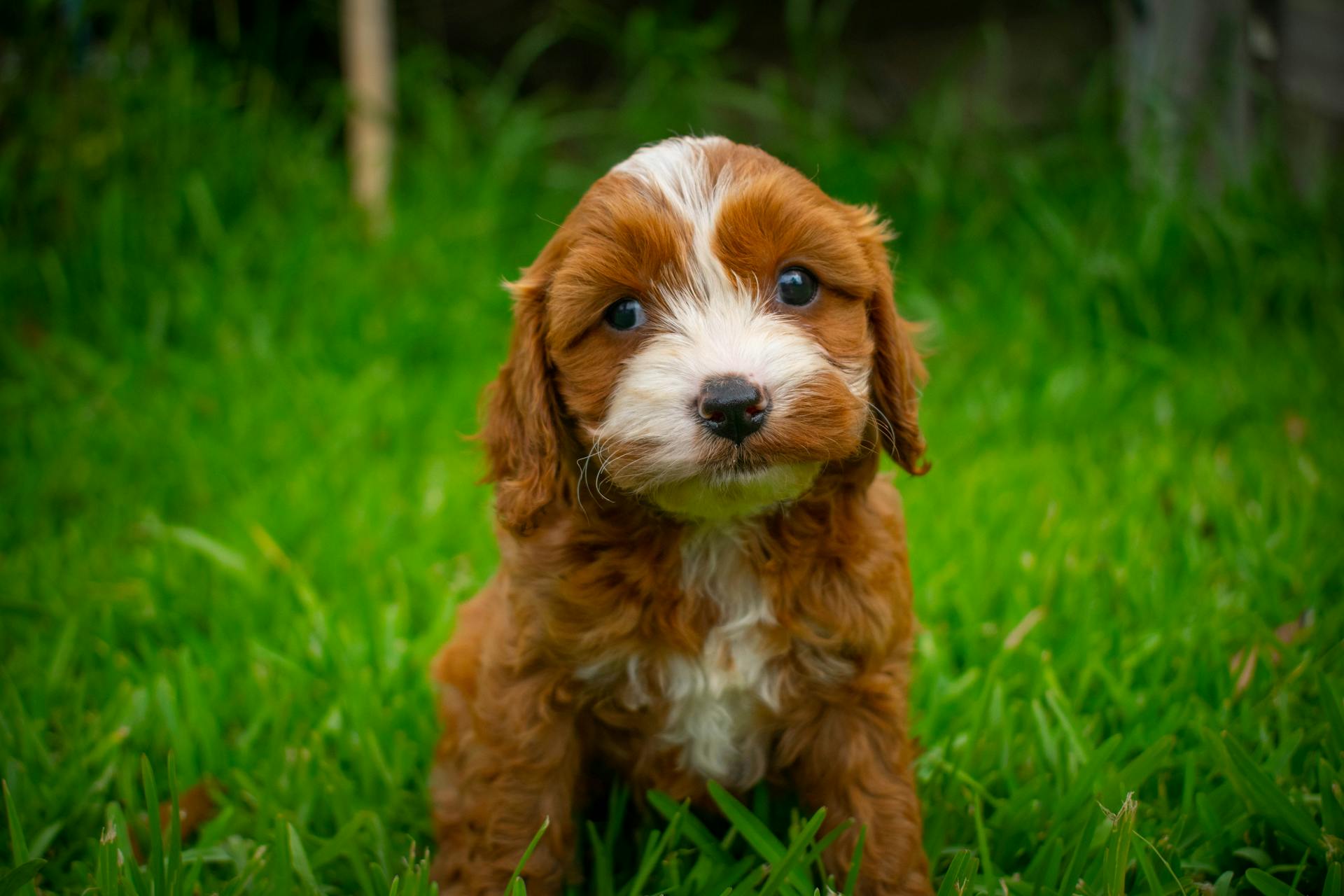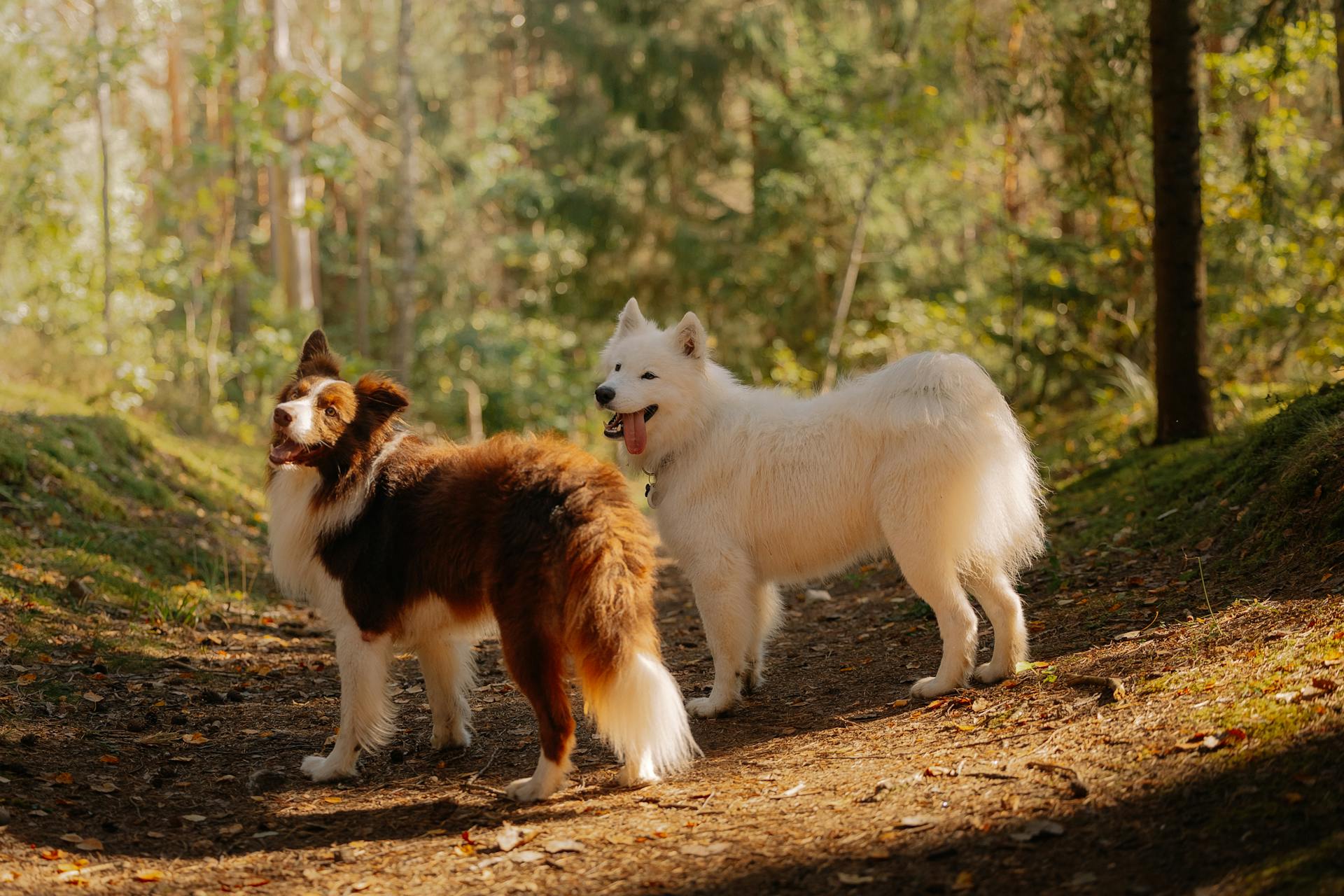
Dogs catch parvo through contact with an infected dog's feces, vomit, or saliva. This can happen when they sniff, lick, or eat contaminated surfaces.
The virus can survive on surfaces for up to a year, making it a long-lasting threat. It's essential to take precautions to prevent the spread of parvo.
Parvo is highly contagious and can be spread through direct contact with an infected dog's bodily fluids, which can occur during play, grooming, or even just being in the same room.
Preventing Parvo
Preventing Parvo is crucial to keep your furry friend safe. Never allow your puppy to spend time around dogs that have not been fully vaccinated against Parvovirus.
Socialization is essential for young dogs, but it's equally important to know the dogs your puppy interacts with are fully vaccinated and don't pose a health risk. Talk to your vet about the best ways to protect your new four-legged family member.
Be sure to follow your vet's advice and have your puppy vaccinated against Parvo, rabies, and other potentially serious conditions based on a puppy vaccination schedule for your area.
Cases of parvovirus have dropped off in recent years, but it's still a serious concern, especially for puppies. The disease is more severe in puppies and is more easily transmissible in environments with poor hygiene and unvaccinated dogs.
To keep your puppy safe, ensure they are vaccinated and take precautions when taking them to public areas, such as the beach or park. If your puppy interacts with other dogs at friends or family, doggie daycare or kennels, make sure they are vaccinated.
Don't take your puppy out to public areas until 2 weeks after their final puppy vaccination, to ensure their antibodies are at a high protective level.
Parvo Spread and Infection
Parvovirus is incredibly contagious, causing extreme gastrointestinal symptoms in puppies and unvaccinated dogs of all ages. The virus is spread through traces of feces from infected dogs.
Asymptomatic dogs that are infected but aren't showing symptoms can spread Parvo, as well as dogs with symptoms, and those that have recently recovered from the condition. This means a dog that looks perfectly healthy can still be contagious.
The virus can even survive for months or even years in contaminated soil. It's a hardy virus that can thrive in a variety of environments.
Parvo can be spread through faecal-oral transmission, or infection in-utero, as well as through shared dog bowls and utensils, hands, clothing, and contaminated shoes. This type of transmission is through fomites, which are inanimate objects that can transfer disease.
Even a human that has unknowingly been in contact with an infected dog can spread the virus to puppies and other dogs just by touching them. An innocent pat on the head can become the beginning of a life-threatening condition.
Puppies and Parvo Susceptibility
Puppies are more susceptible to parvovirus, especially in environments with poor hygiene and unvaccinated dogs.
The disease is more severe in puppies, and it's essential to keep them safe until they're fully vaccinated.
Parvo is extremely hardy, making it difficult to kill with common household disinfectants.
Chlorine-based disinfectants are the only ones that can effectively kill the virus.
It's crucial to keep your puppy indoors until 2 weeks after their final puppy vaccination, to ensure their antibodies are at a high protective level.
If this caught your attention, see: Why Does My Male Dog Keep Licking My Female Dog
Treatment and Risk
Parvo is an incurable viral infection, so treatment focuses on supportive therapies.
Recovering from parvo can be a long process, and it's essential to replace lost fluids to prevent dehydration, which is the real killer. Intravenous electrolyte solution is often used, but in milder cases, subcutaneous or oral fluids may be used for several days.
Antibiotics are used to control secondary bacterial infections, and in severe cases, blood transfusions may be required.
Smaller breeds have a lower survival rate, and if your dog shows signs of severe vomiting and/or bloody stool, you should react quickly.
Parvo Risk in Dogs
Parvo risk in dogs is a serious concern, especially for puppies. They are more susceptible to the disease due to their weakened immune system.
Cases of parvovirus have dropped off in recent years thanks to high vaccination rates, but it's still a threat. If a mother is fully vaccinated against Parvo, her puppies will inherit antibodies that protect them for the first 6 weeks of their lives.
However, as puppies begin to reach 6 weeks of age, their immune systems weaken, making them vulnerable to the disease. Vets recommend starting vaccinations at this age when the mother's antibodies wear off.
The virus is extremely hardy and resistant to heat, detergent, alcohol, and many household disinfectants. Chlorine-based disinfectants are the only ones that can kill it.
To minimize the risk, ensure your dog is vaccinated, especially if it interacts with other dogs in public areas. It's also crucial to keep puppies away from public areas until 2 weeks after their final vaccination.
Parvovirus Disease Treatment
Parvovirus disease treatment is a serious matter, and it's essential to know what to expect. As an incurable viral infection, treatment is directed at supportive therapies.
Replacing lost fluids is probably the single most important treatment, usually by intravenous electrolyte solution. This is especially crucial in severe cases where dehydration is the real killer.
In milder cases, subcutaneous or oral fluids may be used for several days to help the dog recover. Antibiotics are also used to help control secondary bacterial infections.
Really severe cases may require treatment with blood transfusions. Smaller breeds have a lower survival rate, so it's essential to react quickly at the first signs of severe vomiting and/or bloody stool.
Parvo itself does not directly cause pain, but the symptoms can be distressing and uncomfortable. Your vet will administer pain relief if required while treatment progresses.
Dogs who survive Parvo generally go on to lead long and happy lives, but cell death in the intestines and bone marrow of a puppy can stunt their growth. This can also cause long-term kidney or liver damage and permanently weaken the immune system, leaving the dog more susceptible to other diseases in later life.
If your dog has survived Parvo, be aware that they will still have the virus in their faeces for up to three weeks. This means you need to be extra careful to remove the offending poos and dispose of them safely.
Expand your knowledge: Kennel Cough How Long after Exposure
Frequently Asked Questions
Can dogs get parvo from grass?
Yes, dogs can get parvo from contaminated grass, as the virus can survive on surfaces for extended periods. It's essential to take precautions when walking your dog on grassy areas to minimize the risk of parvo transmission.
What are the first signs of parvo in a dog?
The first signs of parvo in a dog include lethargy, loss of appetite, and fever. As the virus progresses, vomiting, diarrhea, dehydration, and a rapid heart rate may also occur.
Sources
- https://urgentvet.com/what-dog-owners-should-know-about-parvovirus/
- https://vet.tufts.edu/news-events/news/canine-parvovirus
- https://cloud9vets.co.uk/knowledge-base/parvo-in-dogs/
- https://www.bearcreekvetonline.com/site/blog/2021/10/30/canine-parvovirus-in-dogs
- https://fletchervet.com.au/2022/02/04/parvovirus/
Featured Images: pexels.com


